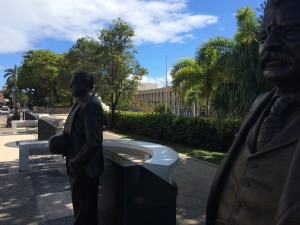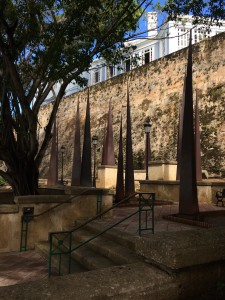Everyone participating in the digital world is being tracked. Digital spies are watching our every move. Surveillance cameras are everywhere. Facial recognition software is getting powerful enough to account for changes in hair color & style, makeup, even disguises. Your cellphone calls, text messages, current location and movements are recorded. Your website clicks, google searches, and internet navigation are collected and analyzed. You get ads and search results tailored to your past habits and “likes.” And most watched is your [anti]social media activity. We’ve all heard about it, read about it, and know it’s happening. Likely you’ve experienced the eerily “appropriate” appearance of ads that show you something you’ve been recently interested in. If you click on it, you’re only encouraging more of the same.
Being superficially aware isn’t enough. Electronic tracking is more pervasive, and invasive, than you realize. “Yea, yea,” you say, “So what.” No, really, you have no idea how much tracking is going on, who is collecting the information, selling it, profiting from it, and how it’s being used to manipulate you.
“It’s harmless and anonymous,” you say. Yes, true, in most cases your name is not connected to the data. But that’s not exactly the whole truth. There is a unique ID on your data. That’s how they send you “relevant ads.” Your data may not have your name on it, but it is you; an ID assigned to you and your data. And it is possible to connect your name to your data should someone or some agency choose to make the connection.
“But it’s all just innocent commerce,” you say. Yes, mostly, sort of, maybe. But that’s not exactly the whole truth. The breadth and depth of the collection, the number of collectors, the data being stored, and swapped, and analyzed is staggering. That’s not the rest of the story, either. The quantity of the collected data is only half of the story. It’s in the analysis of the data. Details of your personal habits are inferred from the innocent data bits. Those details couldn’t otherwise have been collected without asking you directly. It’s your intimately personal business that big business is insidiously taking from you without asking for your permission. The thieves argue that you gave them permission. Get real. You have no choice. You click on “agree” to the terms & conditions, and “I’ve read and understand the privacy policy,” or you don’t get to use the service, or program, or app, or game, or site, hardware, software.
“Oh, you’re just being a conspiracy theory whacko,” you say. Had you said this to me a couple of weeks ago, I would have said, “Yep, true.” But it’s not exactly a conspiracy, not formally. The few big guns in the internet/information business, and governments, are not in collusion. But they are accumulating massive amounts of information about us for some obvious purposes, such as marketing and security, and also, more disquietingly, for the power and the value contained in the data. This is changing, in fundamental ways, the social structure of our civilization. Information is a new currency. “Willingly” giving your data over to corporate interests and getting only “free” email, or “free” apps, or “free” antisocial connections in return is analogous to the free housing, free food, and free clothing given to slaves. Slaves get everything free.
We know we’re being watched, that our data is being collected, but Julia Angwin’s book on the subject, Dragnet Nation, reveals the bits we know are only a wispy film on the surface. It goes almost as wide and deep as the conspiracy theorists speculate. Her book is carefully researched and highly informative. If you read it, you won’t find business as usual, or digital slavery, acceptable. Angwin details the hoop after hoop she jumps through in hopes of anonymizing her electronic trail. Obsessively she tries to avoid being surveilled, but she admits, not with assured success. Despite the mixed outcome, attempting to reduce privacy abuse, by adopting some of the tactics she gives us to thwart the trackers and smear the trails we leave behind, is advisable.
Privacy used to be a simple issue. Lock your doors. Close your blinds. Store your documents in a safety deposit box. Keep a fireproof safe. But the digital world is different. It’s public. That FaceFook account is like an illuminated billboard. Your cellphone is a GPS tracking device. Your internet connection is akin to lying naked on a beach. You’re in a wide open, public space. As long as that’s understood, it’s not necessarily bad. We accept the vulnerability of being in public. The big difference is that on the beach we can see others watching us; on the internet the watchers are hiding. On the beach we know we are out in the open; on the internet we are blind to the exposure. We need digital beach towels and virtual umbrellas. We need to be more aware and take action. That starts with knowing more. Julia’s book is a step towards more knowledge.
And there’s still more to the story. We’re not only vulnerable to having our data collected without our consent when we fail to close our digital blinds, we’re subject to ever increasing cybercrime. Julia doesn’t cover security with the same intensity as she does privacy. It’s another related set of grave issues that needs immediate attention. The 2015 release, Future Crimes, by Marc Goodman, takes a long, hard look at internet security. Check back for a future post on his book.
Dragnet Nation: A Quest for Privacy, Security, and Freedom in a World of Relentless Surveillance, Julia Angwin, Henry Holt and Company, 2014
Another wakeup call, Jaron Lanier’s [Who Own’s the Future?]
![[art]by[odo]](https://artbyodo.net/wordpress/wp-content/uploads/2011/03/cropped-Header.jpg)




